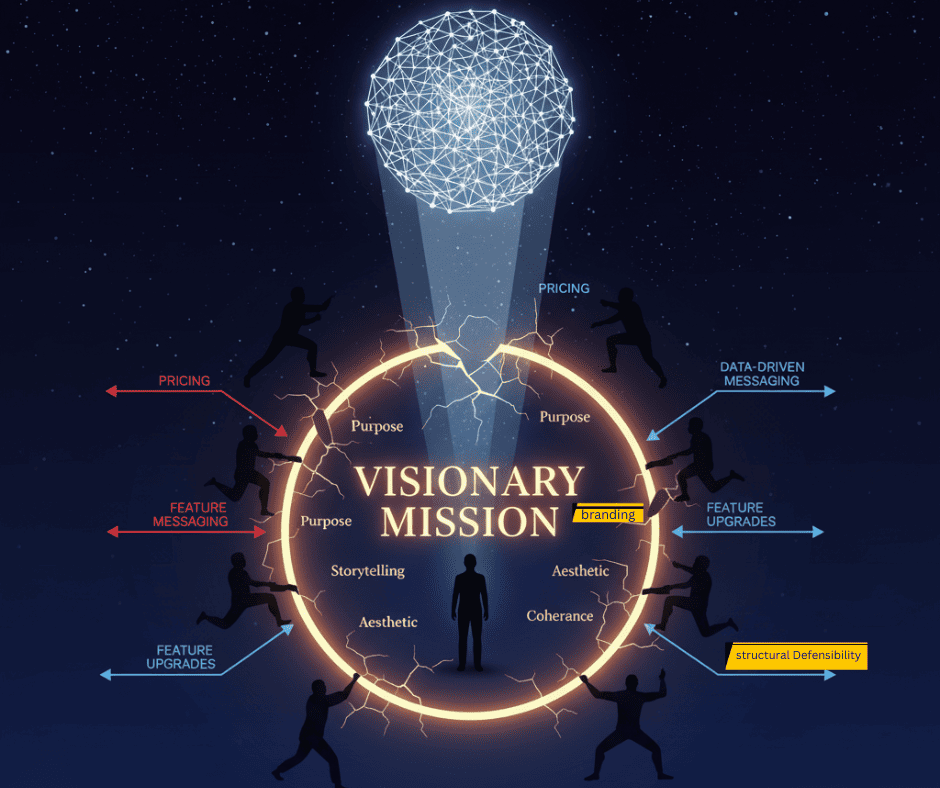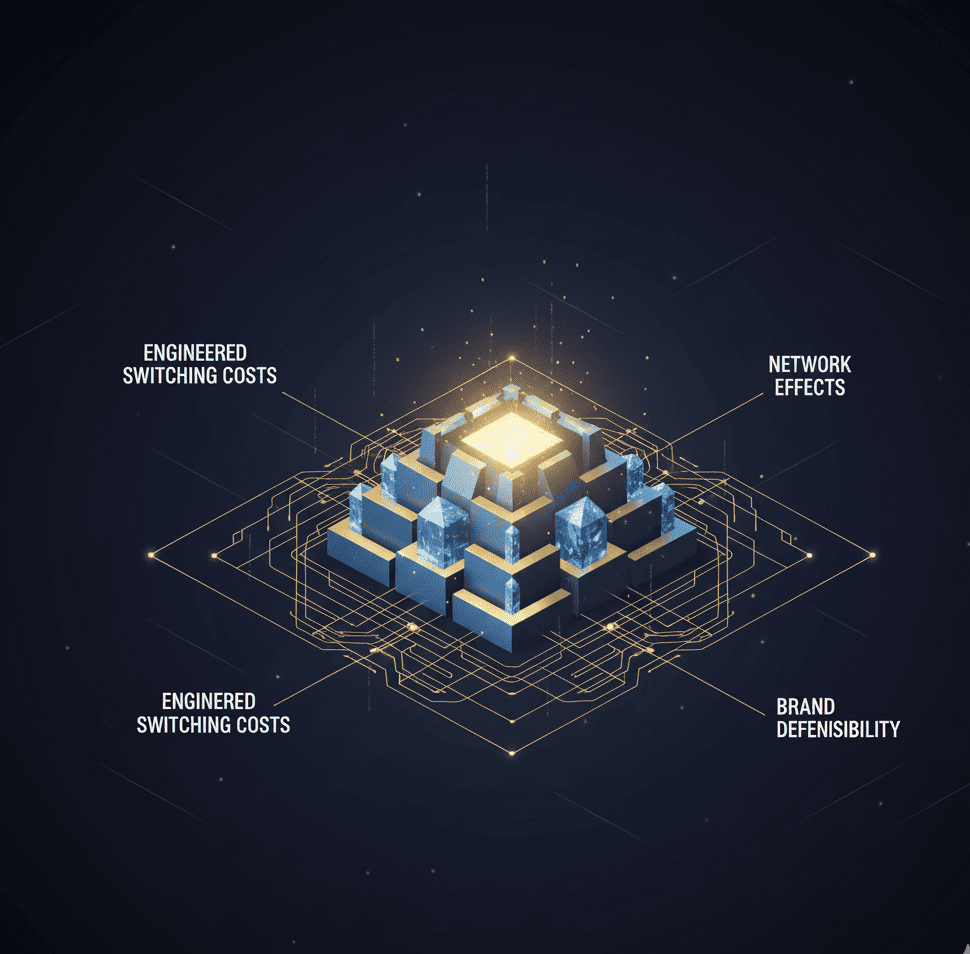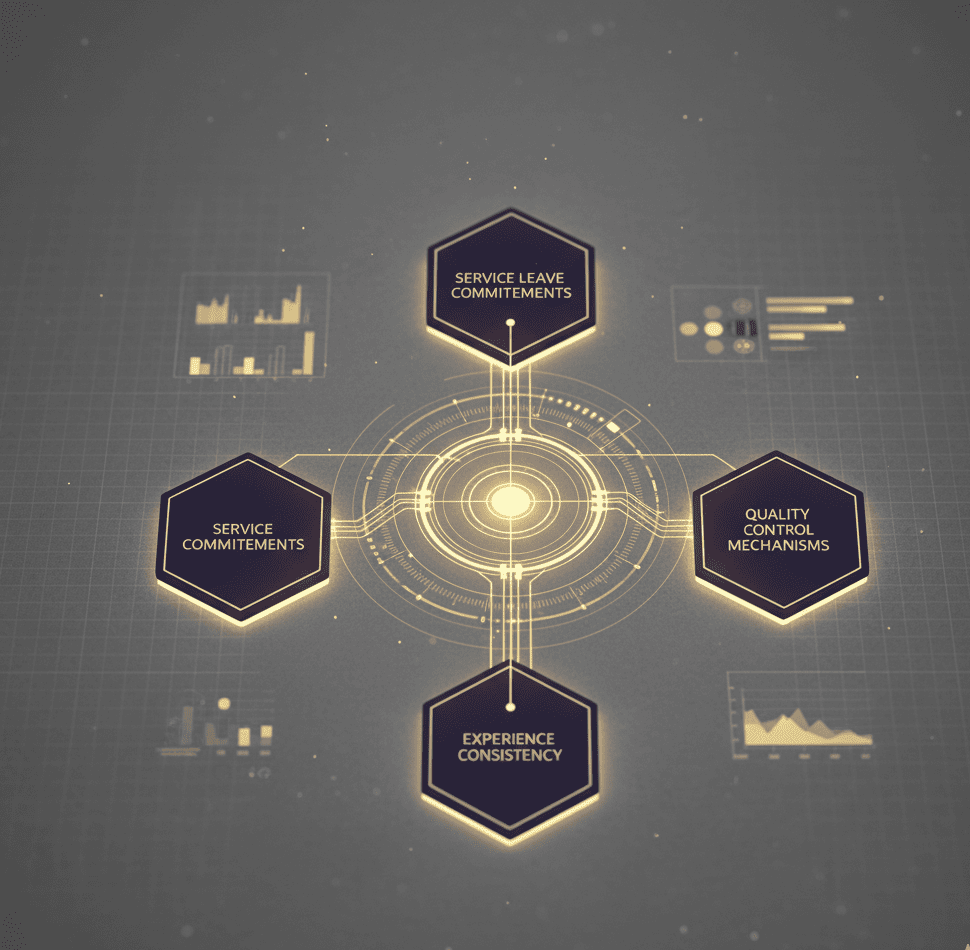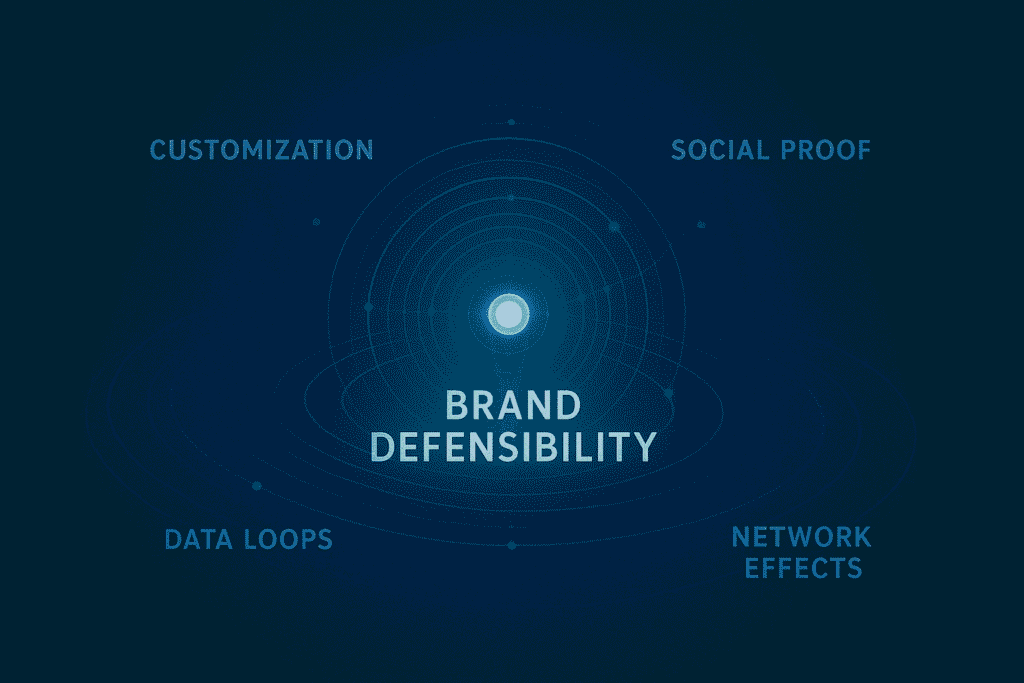
The Strategic Alpha Engine: Brand Fortification

The Definitive Diagnosis: The Narrative-as-Defense Delusion
Traditional brand consulting operates on a catastrophic strategic fallacy: the belief that compelling narrative and aesthetic coherence constitute defensible competitive advantage. Legacy firms invest millions in brand positioning workshops, visual identity systems, and storytelling frameworks while treating brand as a marketing artifact disconnected from the structural architecture of the business. This is the Narrative-as-Defense Delusion—the assumption that customer perception alone creates barriers to competitive displacement. The result is predictably catastrophic: brands with high awareness and positive sentiment experience customer defection the moment a competitor offers marginally superior pricing or features, revealing that perceived brand strength provided zero structural defensibility.
The fundamental error is ontological. Traditional branding treats brand value as a psychological construct maintained through consistent messaging and aesthetic presentation. This approach fails because psychology without structural reinforcement creates no switching costs, no lock-in mechanisms, and no compounding value delivery that increases with customer tenure. A competitor can replicate the emotional positioning, reverse-engineer the aesthetic language, and deploy equivalent or superior storytelling while offering better unit economics—and the “strong brand” provides no protection whatsoever. Customer loyalty proves to be a narrative illusion masking transactional relationships vulnerable to immediate arbitrage.
The pathology manifests most visibly in the gap between brand promise and brand moat. Founders confuse customer affinity with customer captivity, mistaking positive sentiment for structural lock-in. A customer who “loves” your brand but faces zero friction in switching to a competitor is not a brand asset—they are a liability awaiting activation by competitive arbitrage. Traditional brand consultancies cannot address this vulnerability because they lack the technical and operational expertise to hard-code brand value into business architecture. They produce brand guidelines and messaging platforms while the actual sources of structural defensibility—proprietary data accumulation, switching cost engineering, ecosystem dependencies—remain unaddressed or delegated to separate functional teams with no brand integration mandate.
Brand Fortification at Elevion eliminates this structural deficiency through Brand Moat Engineering—the systematic embedding of brand value into the technical, operational, and economic architecture of the business to create Replication Friction and structural switching costs. This is not brand strategy or identity design; it is the transformation of brand from marketing asset into competitive weapon through the engineering of defensibility mechanisms that make customer defection economically irrational, operationally complex, or psychologically costly. Brand transitions from story to structure, from narrative to moat, from aesthetic preference to strategic barrier that compounds in strength with every customer interaction and data accumulation cycle.
The Elevion Methodology: Brand Fortification as a Systemic Advantage
Our Brand Fortification capability operates as a defensibility engineering system that transforms brand equity from transient perception into durable competitive advantage. This methodology ensures brand value creates quantifiable barriers to competitive displacement and measurable pricing power:
Inputs: Causal Analysis of Customer Switching Costs
- Forensic audit of existing customer relationships to identify which brand attributes, service elements, or product features actually influence retention decisions versus those that merely correlate with positive sentiment but possess zero causal impact on switching behavior
- Behavioral economics analysis revealing the psychological, economic, and operational factors that create genuine switching costs—data portability friction, learning curve investments, ecosystem integration dependencies, social proof accumulation, customization value—versus superficial loyalty drivers that evaporate under competitive pressure
- Competitive vulnerability mapping that identifies which elements of customer experience can be easily replicated by rivals versus those that require significant capital investment, technical sophistication, or temporal accumulation to reproduce
- Customer lifetime value decomposition separating the economic contribution of brand premium (willingness to pay above commodity pricing) from other value drivers, revealing the true financial impact of brand strength versus the illusion created by conflating brand with product quality or service excellence
- Causal identification of which brand touchpoints and experiential elements actually drive customer advocacy, referral behavior, and organic acquisition versus those that consume resources without generating compound returns through network effects or word-of-mouth velocity


Process: Brand Moat Engineering (Hard-Coding Value Into the Tech Stack/Operations)
- Systematic encoding of brand differentiation into proprietary technology infrastructure: custom algorithms that personalize experiences in ways competitors cannot replicate, data accumulation loops that improve service quality with usage tenure, and platform architectures that create ecosystem lock-in through third-party integrations
- Operational protocol design that transforms brand promise from aspiration into guaranteed delivery through systematized quality controls, service level commitments backed by operational infrastructure, and experience consistency mechanisms that function independently of individual employee performance
- Switching cost engineering through strategic introduction of friction points that make customer migration economically or operationally costly: proprietary data formats that complicate portability, integration dependencies that require technical re-implementation, accumulated customization that cannot transfer to competitor platforms
- Network effect architecture that increases brand value proportionally with customer base growth: community features that create social switching costs, marketplace dynamics that improve with liquidity, and data network effects where service quality compounds through aggregate usage patterns
- Brand value quantification systems that measure the specific economic contribution of brand moat elements: price premium sustainability testing, churn rate correlation with brand touchpoint exposure, customer acquisition cost reduction attributable to brand awareness and advocacy
Output: Pricing Power Moats and Quantifiable LTV Protection
Demonstrated Pricing Power through quantified ability to maintain premium pricing without customer defection: A/B testing validates that brand equity justifies price premiums, competitive displacement attempts fail due to structural switching costs rather than price matching
Quantifiable LTV Protection where brand moat engineering creates measurable improvements in customer retention curves, lifetime value trajectories, and cohort economics that compound over time as switching costs accumulate with customer tenure
Replication Friction that converts brand from aesthetic asset into structural barrier: competitors attempting to replicate positioning discover they cannot reproduce the experience without equivalent operational sophistication, technical infrastructure, and temporal data accumulation
Compounding brand equity where each customer interaction strengthens defensibility through data accumulation, network effect contribution, customization deepening, or ecosystem integration—creating exponential rather than linear returns on brand investment
Strategic insulation from competitive arbitrage: margin resilience during price wars, customer retention during aggressive competitor acquisition campaigns, and sustained premium positioning despite commodity alternatives entering the market

ECOSYSTEM
Positive growth.
Nature, in the common sense, refers to essences unchanged by man; space, the air, the river, the leaf. Art is applied to the mixture of his will with the same things, as in a house, a canal, a statue, a picture.
But his operations taken together are so insignificant, a little chipping, baking, patching, and washing, that in an impression so grand as that of the world on the human mind, they do not vary the result.



Undoubtedly we have no questions to ask which are unanswerable. We must trust the perfection of the creation so far, as to believe that whatever curiosity the order of things has awakened in our minds, the order of things can satisfy. Every man’s condition is a solution in hieroglyphic to those inquiries he would put.